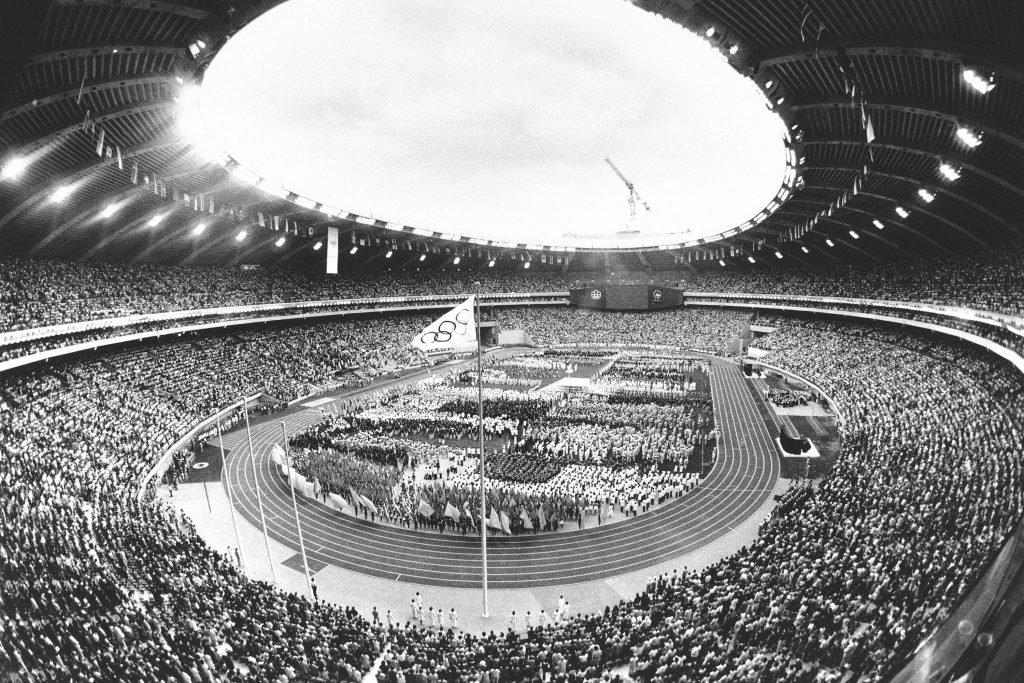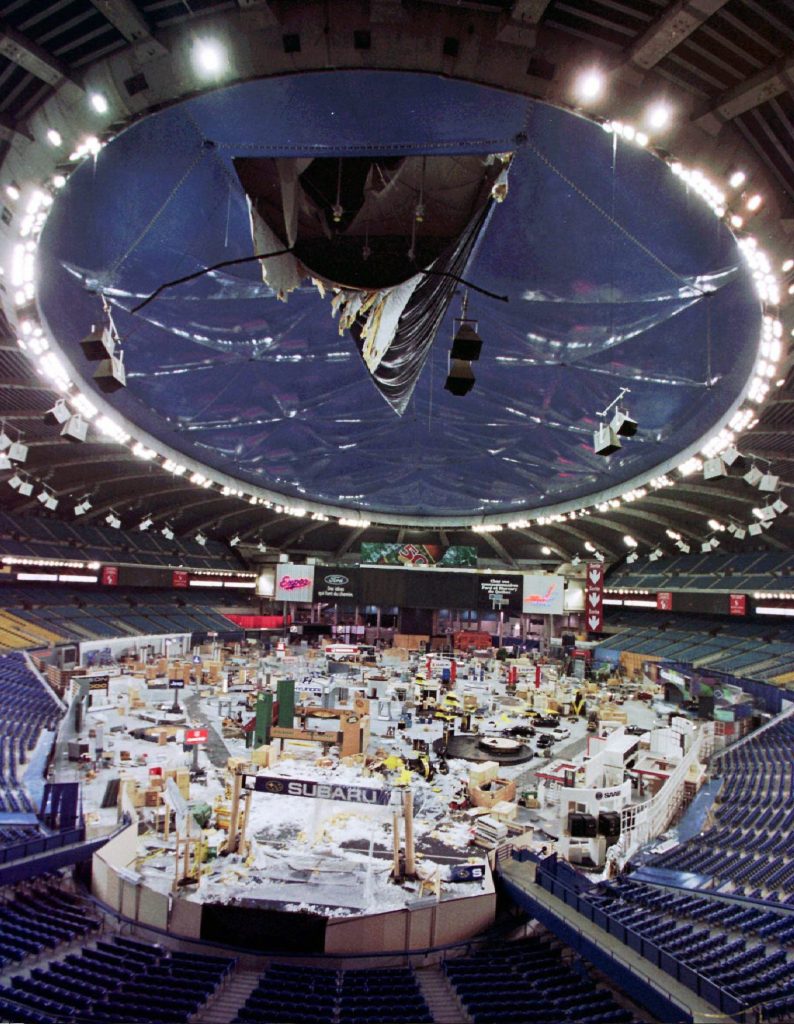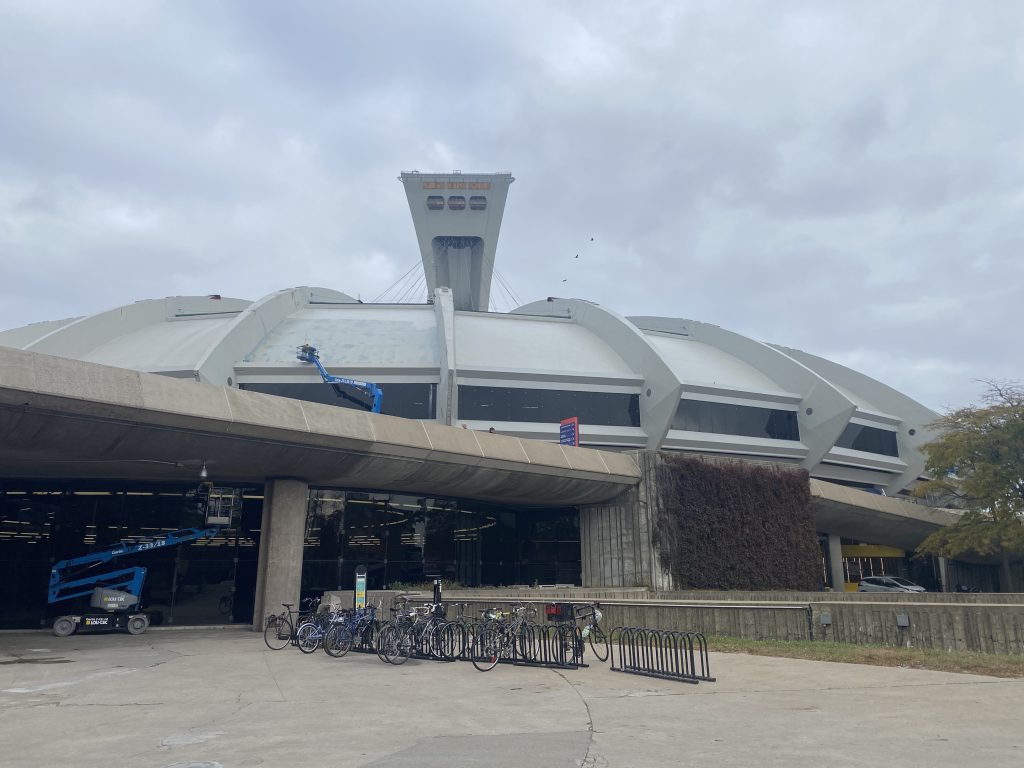Quebec premier wants to make Montreal’s Olympic Stadium a ‘positive symbol’
Posted October 17, 2023 8:48 am.
Last Updated November 14, 2023 5:10 pm.
Quebec Premier François Legault believes it’s time to stop seeing the Montreal Olympic Stadium as a negative symbol. He wants to restore it to its former glory, even though he knows the operation will be costly.
Last July, the Société de développement et de mise en valeur du Parc olympique, the former Régie des installations olympiques, announced that it would have to replace the technical ring of the imposing building in order to install a new roof.
On Tuesday, the premier said at a press conference: “We’re already working to see which kind of proposal we can have to replace it andd definitely, I want that the Olympic Stadium becomes again a positive symbol in Montréal.”


“It’s a national monument, so I think it should be improved and I think it should be used more,” said Montrealer Gerry Olsen. “And if there’s a baseball team, it should be put in the Olympic Stadium.”
Such a large-scale operation will explode the costs of a project that is already complex and has been postponed for many years.
This news has rekindled the debate about the real relevance of replacing the Stadium’s roof, whose wrinkles from the passage of time are becoming increasingly difficult to hide.
At a press scrum held on Monday evening to coincide with the launch of a book on the career of hockey player Mike Bossy, Legault was clear: a new roof must be installed on the Olympic Stadium, built for the 1976 Olympics in Montreal.
“My challenge with the Olympic Stadium is to turn it from a negative symbol into a positive one,” Legault explained, noting in passing that the stadium and its leaning tower are among the icons that put the metropolis on the international map.
“It’s a beautiful building and we remember the Olympics,” said Olsen. “And it’s sometimes been well-used and most of the times it’s been a waste. To let it fall apart is not going to solve the problem.”

“There are plenty of French people, among others, who want to see the Olympic Stadium when they come to Montreal. It needs a roof, and we’re looking at different scenarios,” added the Premier.
“He’s living on nostalgia, he’s trying to appeal to a certain element within Quebec society that wants to see that building stand,” said sports economist, Moshe Lander, who teaches at Concordia University. “It is completely useless. It’s past its time. It has no further use and so it’s just pouring good money and he’s never gonna recoup that investment. It’s never going to lead to anything productive.”
The roof was built over 10 years after the Olympics and has been riddled with problems since. In January 1998, during the ice storm, snow and water leaked onto the floor and forced the cancellation of two Rolling Stones concerts. In January 1999, ice, snow and pieces of the roof rained down on 200 people preparing for an auto show, injuring five.



“It was unfortunate that the roof always falls apart, I think we should still preserve it,” said Montrealer Inge Rumler. “I think we’ve used it for many different reasons: we used it for vaccination campaigns, we used it for the homeless at times, for cultural things. And I think we should just keep it. For some things you just have to spend money.”
“I don’t think its a good idea for now, because of the inflation,” said Montrealer Beni Mankou. “It’s not the time for the renovation of the Olympic Stadium.”
“It could be used for creating social housing, for creating some sort of benefit for Montreal in general,” said Lander. “The only thing that it is right now is an eyesore.”
One Montrealer says the building is a piece of art.
The current roof has already passed the end of its useful life. In 2017, Philippe Couillard’s Liberal government had announced its replacement, at a cost of $200 to $250 million, with delivery in 2022.
In 2019, however, the timetable was postponed to 2024, citing “the complexity of the project”. This new timetable will not materialize either, and no new date has been set.
What we do know, however, is that installing a new roof will cost hundreds of millions of dollars.
“Yes, it’s going to be expensive, but I think it’s important that the Olympic Stadium has a roof,” Legault insisted.
“There’s a reason that thing is called the Big O, and it’s not surprising that, especially in Montreal when it comes to big infrastructure projects, the ideas of things like timeliness, quality, and on budget, it doesn’t exist,” said Lander. “If he wants to put money into that building, it should be into knocking it down.”

The Société de développement et de mise en valeur du Parc olympique declined an interview request but posted this statement to social media, which translates to:
“The Olympic Park has been in contact with Mr. [François] Delaney for over two decades. On several occasions, it has been suggested that he take a more formal approach to his solution, enlisting the help of consulting engineering firms, architects and manufacturers, and proposing a financial package to develop and take his solution further.
The Park has never received a formal, official deposit from them.
In October 2019, the Olympic Park set up an international call for qualification to select a company capable of replacing the Stadium roof, inviting all interested firms to submit their applications., Mr. Delaney’s company did not submit its application to participate in the qualification process.
The only group to qualify for the procurement process was the GPC consortium (Groupe Pomerleau-Canam), whose members possess solid expertise in managing large-scale projects, as well as a number of concrete, proven achievements – a sine qua non condition required by the Olympic Park in its qualification criteria.
Finally, contrary to what has been reported in the media, the stability of the Olympic Stadium does not rest on the technical ring, but rather on the 34 consoles that make up the building. What’s more, the consoles support only 30% of the total weight of the current roof, the remaining 70% being borne by the Olympic Stadium mast. All this information is easily accessible at parcolympique.qc.ca/toiture.“
With information from Pierre Saint-Arnaud
This report by The Canadian Press was first published in French on October 16, 2023.



